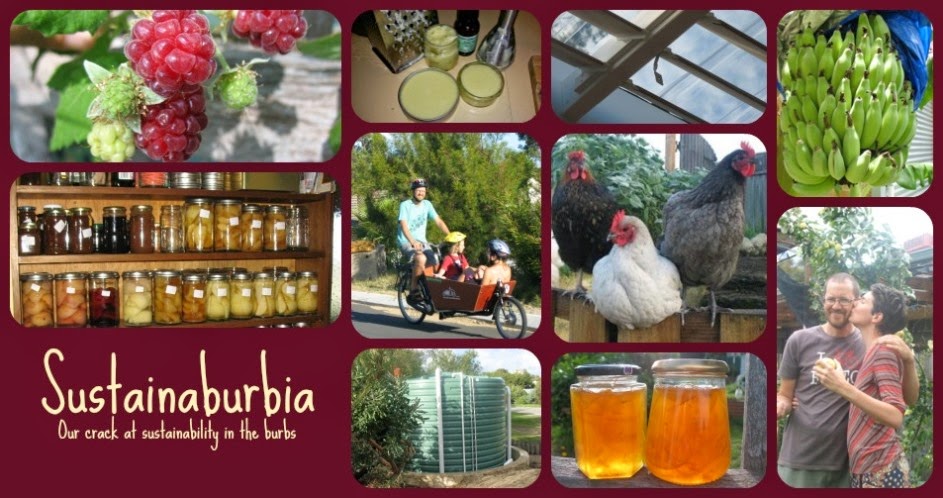We've just started to get raw milk (or Mooshine as we now call it, we took this name from our friends over east). Raw milk is unhomogenised and unpasteurised and for some reason it was made illegal to sell it for drinking many years ago in most western countries (it is now sold as bath milk to get around the legal insanity). I think a few people got sick from tainted milk and there was a knee jerk reaction to make pasteurisation mandatory. The fact is that hygiene standards are much better these days and the risk of getting sick from raw milk are tiny. Unfortunately in our risk (and benefit?) averse society the law has stayed with us and the benefits of milk as it should be are lost to most. So you can sell cigarettes, alcohol, guns, coal, McDonalds, etc but you can't sell raw milk! What a shame, have we lost our minds? Not only are supermarket chains ripping dairy farmers off by paying peanuts for their product, but farmers are also forced to make their milk inferior in order to sell it. And companies also have the cheek of taking the cream off and selling it for the same price as full cream milk (then they can sell you the cream separately and make even more money!). Raw milk tastes better and some people have found relief from conditions such as Eczema and Asthma.
We've been getting Jersey milk lately and it has about 2 litres of cream in five litres.
Another great thing about getting raw milk is that you can make your own butter very easily. Here's how you do it. Firstly let the cream settle and pour or spoon it off into a separate container. Take it out of the fridge and leave it to come to room temperature (30-60 mins). Then put it in a food processor or use a bar mixer to buzz it for 10-20 minutes.
When it's ready you may hear the motor change pitch or see globules of fat and butter forming. This is when you can pour it off through a sieve to separate it from the butter milk.
Then put it in a bowl with cold water (so it doesn't melt) and press it with butter pats or a spoon to remove milk and air pockets and shape it. We do a triple rinse to get all the milk and water off. You should get roughly half butter and half buttermilk.
That's pretty much it. You can add salt if you like or just have it unsalted. Yum! You can use the butter milk as you like: it's supposed to be great for making scones; heat it up with some chilli and garlic, leave it over night and then warm it up and add it to layer pellets to make beautiful hot mash for your chooks; make your own low fat yoghurt with it; I just put mine in a cheese sauce for Macaroni cheese (Quin's favourite).
So there you go, unadulterated low carbon butter. I dig this youtube video, mainly for the accent (but don't waste the buddermilk!). If you live near a dairy farm speak nicely to the farmer and you may even get your own Mooshine source (don't come across like a snoopy milk inspector though!). If you live in the city they may sell it at health food shops or there are bound to be a few hippies drinking it, just ask them where to get it...
We've been getting Jersey milk lately and it has about 2 litres of cream in five litres.
Then put it in a bowl with cold water (so it doesn't melt) and press it with butter pats or a spoon to remove milk and air pockets and shape it. We do a triple rinse to get all the milk and water off. You should get roughly half butter and half buttermilk.
That's pretty much it. You can add salt if you like or just have it unsalted. Yum! You can use the butter milk as you like: it's supposed to be great for making scones; heat it up with some chilli and garlic, leave it over night and then warm it up and add it to layer pellets to make beautiful hot mash for your chooks; make your own low fat yoghurt with it; I just put mine in a cheese sauce for Macaroni cheese (Quin's favourite).
So there you go, unadulterated low carbon butter. I dig this youtube video, mainly for the accent (but don't waste the buddermilk!). If you live near a dairy farm speak nicely to the farmer and you may even get your own Mooshine source (don't come across like a snoopy milk inspector though!). If you live in the city they may sell it at health food shops or there are bound to be a few hippies drinking it, just ask them where to get it...




